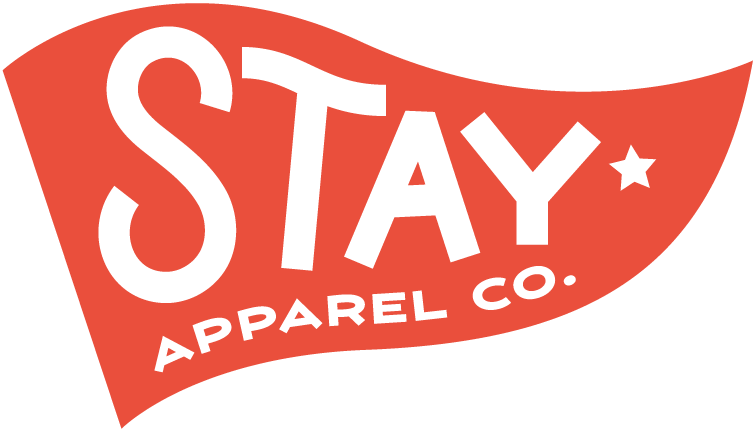Tale of the tee: King-Kup peanut butter cups
Brothers Monroe and Glenn Stover formed
what became King-Kup in Hershey in 1948.
Today, the building at 749 E. Chocolate Ave., Hershey, is home to a 110-room Hampton Inn & Suites.
More than 60 years ago, it was home to sweets of the confectionery kind.
King-Kup Candies wasn’t the first chocolate company in Hershey, but it built on the legacy begun in 1905 by town namesake Milton S. Hershey.
Exhibit A: Our new King-Kup Tee, featuring the company’s small peanut butter cups that came individually wrapped in gold foil.
Worked with Milton Hershey
King-Kup founder Monroe “Monty” Stover, who died in 2003 at age 103, was one of the last people to have worked with Milton Hershey, according to the Patriot-News newspaper.
When Stover was 10, his family moved to Hershey from Cumberland County. In his teens, Stover quit school and started working full-time in the Hershey chocolate company’s mail room.
He rose to become purchasing manager for Hershey Estates. He is credited with playing key roles in the construction of the Hershey Hotel, Arena and Stadium projects.
Milton Hershey died in 1945. Three years later, Monty Stover and his brother, Glenn, organized Stover Candy Co., changing the name to King-Kup in 1952. One of their first products was caramel corn.
King-Kup’s factory and retail store were just a mile east of the much larger Hershey chocolate factory.
The Stover family sold the business in 1954 to A.J. Napolitan of Lancaster, owner of Schoener Candy in Reading, Pa.
In 1959, a King-Kup ad in the New Era newspaper of Lancaster, congratulated dime store chain F.W. Woolworth Co. on its 80th anniversary. The ad identified King Kup as the manufacturer of peanut butter cups, Cocoanut Ditties and Nappy’s Patties, the latter taking its name from Napolitan.
A Lebanon Daily News ad in 1962 elaborated on King-Kups product line, which also included Wagon Wheels, Karm’l Cups and Nutty Treats.
Moved to Reading
On a Tuesday night in late February 1963, the Palmyra Lions Club toured the King-Kup plant. Clifford Mark, the club’s secretary and the plant assistant superintendent, told the group about changes in the candy industry in the past 13 years.
Presumably he didn’t divulge, if he even knew, details about a seismic change that was weeks in the offing. From the April 3 edition of the Evening News of Harrisburg:
“King-Kup Candies Inc., employer of more than 200 persons in this ‘chocolate town,’ will move to Reading.” Details were scant, including the exact timing of the move.
Meanwhile, just two weeks later, came word that Hershey Chocolate Corp. intended to acquire H.B. Reese Candy Co. of Hershey, which started making its peanut butter cups in 1928.
An article on the bottom cover of the four-page Hershey News newspaper, said nothing about King-Kup, including its impending move. King-Kup and Reese’s had engaged in a trademark dispute in the mid-1950s, the resolution of which I’ve been unable to determine.
King-Kup’s move played out over a period of years. Three days before Christmas 1965, an ad in the Lebanon Daily News offered the sale of the 70,000-square-foot Hershey “modern industrial building,” complete with its retail store and eight-room residence.
Pennsylvania Power & Light occupied the building for a period, according to the Hershey History Center. It was vacant in 1998 when Hampton Inn moved in.
Sold and ultimately closed
The next 15 years were tumultuous ones for King-Kup and the candy industry, with the company changing hands multiple times.
1966: Helme Products Inc. of Helmetta, N.J., first bought King-Kup and then Schoener, combining them as King Kup-Schoener Candies. In 1967, Helme bought the W.F. Schrafft & Sons Corp. candy business, into which King Kup-Schoener was folded.
1967: Gulf + Western Industries Inc.’s consumer products division bought W.F. Schrafft & Sons.
King Kup-Schoener continued to enjoy wide distribution, as evidenced by a print ad in Louisiana at Easter 1973. It featured a couple of the company’s seasonal milk chocolate items, a hollow 3.5-ounce Peter Rabbit for 49 cents and a solid one-pound bunny for $1.19.
But there was no pulling a rabbit out of a hat when it came to King-Kup’s long-term survival.
In March 1981, Gulf + Western, citing slumping sales, announced that Schrafft Candy Co., with plants in Boston and Reading, Pa., would close its doors “effective immediately.”
A year later, newspapers in Baltimore and Chicago, Los Angeles and San Francisco ran ads for the April 22 sale of machinery and equipment “formerly of the King Kup Candy Co.” in West Reading, Pa.
But back in Hershey, decades after selling King-Kup, Monty Stover returned again and again to the black book that contained the candy recipes he continued to make at home.
And, the Patriot-News said upon his death, he continued to make caramel corn the rest of his life.

